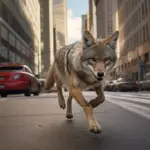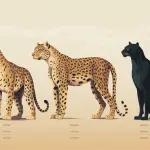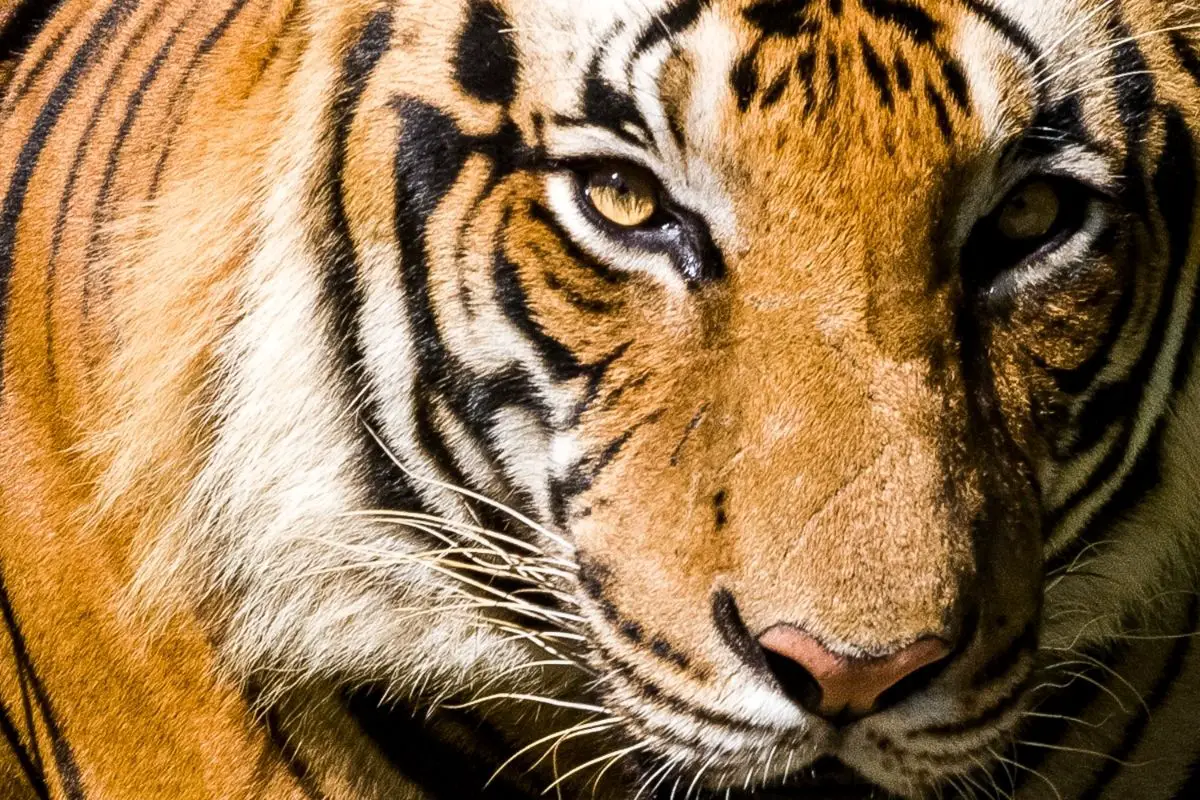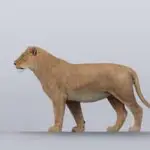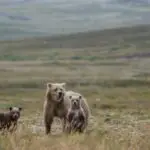How long is a bobcat tail? This question might seem simple, but the answer leads us into a fascinating exploration of one of North America’s most intriguing wildcats.
The bobcat, known for its distinctive ‘bobbed’ tail, is a creature of beauty and strength. In this article, we delve into the specifics of the bobcat’s tail length, along with other key characteristics of this remarkable animal.
From its size and weight to its unique behaviors and habitats, we’ll provide a comprehensive look at the bobcat, ensuring you’ll come away with a newfound appreciation for this wildcat.
The bobcat, known scientifically as Lynx rufus, is a fascinating creature that has intrigued wildlife enthusiasts and scientists alike.
One of the most distinguishing features of this wildcat is its tail. So, how long is a bobcat’s tail? And do bobcats have long tails? Let’s dive into the world of bobcats to answer these questions and more.
The bobcat is named for its tail, which appears to be cut or “bobbed.” The tail length of a bobcat typically ranges from 10 to 20 cm (4 to 8 inches), making it significantly shorter than the tails of many other large cats.
This bobbed tail is a distinctive feature that sets the bobcat apart from other members of the Lynx family.
The bobcat’s tail is also relatively thick and has a black tip. The tail is used for balance when the bobcat is climbing trees or running through dense vegetation.
It is also used to communicate with other bobcats. Bobcats will often wag their tails when they are feeling playful or excited. They may also use their tails to mark their territory.
Bobcat Size and Weight
The bobcat is a medium-sized wildcat, larger than a domestic cat but smaller than a lion or tiger.
The body length of a bobcat can range from 60 to 100 cm (24 to 40 inches), and they stand about 50 to 60 cm (20 to 24 inches) at the shoulder.
Bobcats have a long tail that is about 20 to 30 cm (8 to 12 inches) long.
Their fur is typically brown or reddish-brown, with black spots on their back and sides.
Bobcats have short legs and large paws, which help them to walk through snow and other rough terrain.
They have sharp claws that they use to catch prey, such as rabbits, rodents, and birds.
Bobcats are solitary animals, and they typically hunt at night. They are found in North America, from Canada to Mexico.
Bobcats are not considered to be endangered, but their populations have declined in some areas due to habitat loss and hunting.
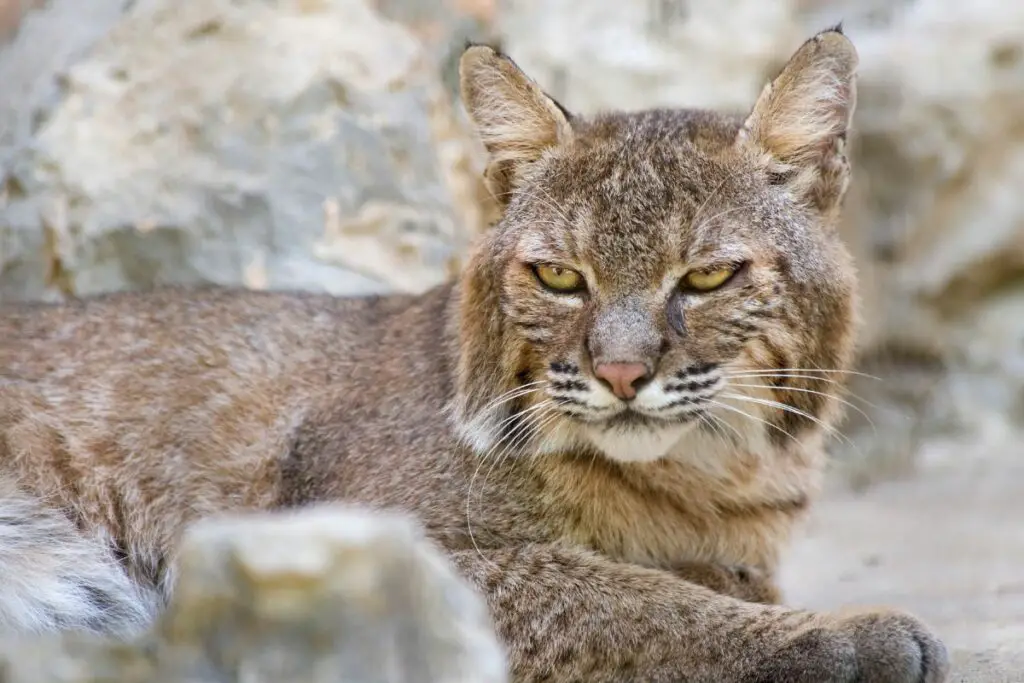
Appearance and Behavior
Bobcats are long-legged cats with large paws and tufted ears. Their fur is pale brown to reddish with black spots, and the underparts are white.
The tip of a bobcat’s tail is black above and white below, adding to their unique appearance.
Bobcats are found throughout much of North America, living in diverse habitats ranging from forests and grasslands to swamps and deserts.
They are elusive, nocturnal animals that are rarely seen by humans, despite being the most common wildcat in North America.
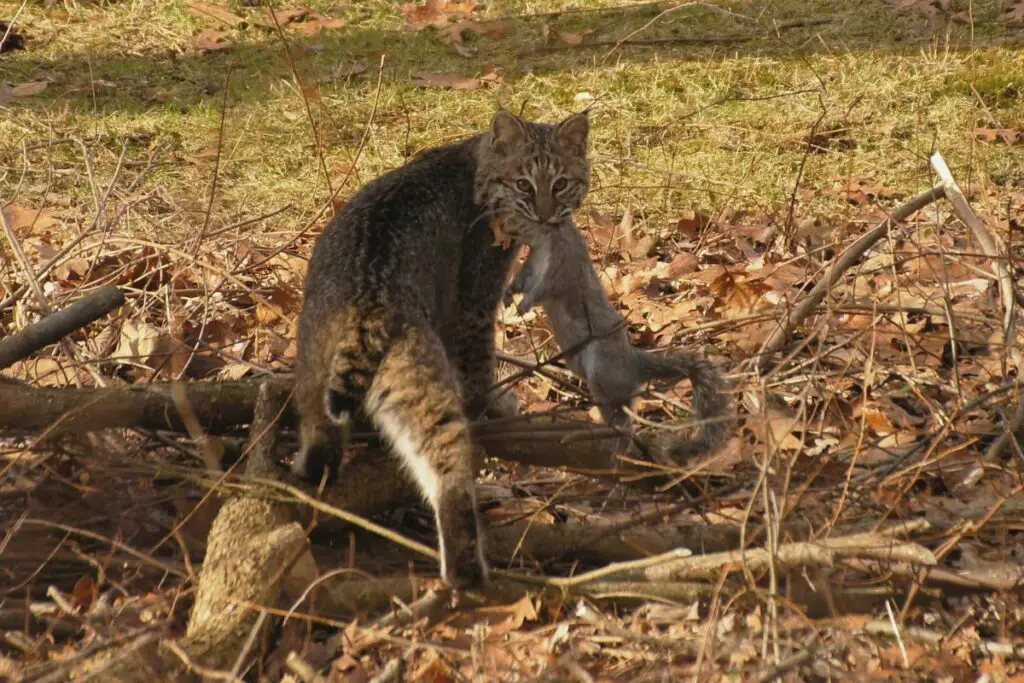
Facts About Bobcats:
Bobcats as Excellent Climbers:
Bobcats are adept climbers, using their strong limbs and sharp claws to easily scale trees. This climbing ability serves multiple purposes. It provides them with a vantage point to spot potential prey, offers a safe refuge from predators, and can even be a place to rest or hide during the day. Despite their climbing prowess, bobcats are typically terrestrial and prefer to hunt on the ground.
Bobcats as Swimmers:
While not commonly associated with water, bobcats are indeed capable swimmers. They can cross rivers and streams if necessary, whether in pursuit of prey, escaping from threats, or seeking new territories. However, they generally do not swim unless required, as they prefer land-based activities.
Adaptability of Bobcats:
One of the reasons bobcats are widespread across North America is their remarkable adaptability. They can thrive in a variety of habitats, from forests and grasslands to deserts and swamps. This adaptability extends to their diet as well, as bobcats are opportunistic predators that can eat a wide range of small to medium-sized animals, including rodents, rabbits, birds, and even small deer.
Bobcats and Human Interaction:
Bobcats are generally not aggressive towards humans and tend to avoid areas with high human activity. However, like any wild animal, they will defend themselves if they feel threatened or cornered. It’s important to remember to respect their space and never attempt to feed or approach a bobcat in the wild.
Bobcats in the Ecosystem:
Bobcats play a crucial role in maintaining the balance of the ecosystems they inhabit. As predators, they help control populations of rodents and other small animals, preventing overpopulation and the potential spread of diseases. This predatory role also indirectly influences vegetation patterns, as lower rodent populations can lead to less consumption of plant seeds and seedlings.
Understanding these aspects of bobcat behavior and ecology underscores the importance of conserving these remarkable creatures and their habitats.
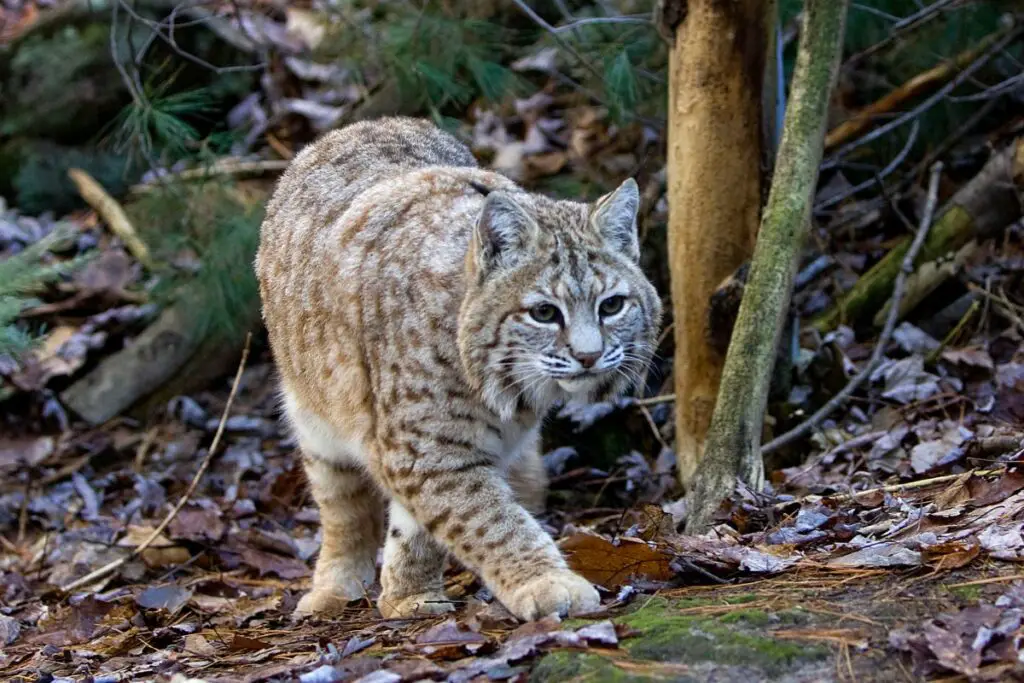
Conclusion
So, does a bobcat have a tail? Yes, it does, and it’s a distinctive one at that. The bobcat’s tail, along with its size, weight, and behavior, makes it a unique member of the wildcat family.
Whether you’re looking at a bobcat with a long tail or a bobcat with a shorter tail, you’re witnessing a remarkable creature that plays a vital role in North America’s ecosystems.
This article is intended as a general guide and may not apply to specific regional variations of bobcats. For more detailed information, please consult a wildlife expert or conduct further research.
- Sink Your Teeth Into This: Analyzing the Powerful Lion Bite Force - September 8, 2023
- Siberian Tigers: Everything You Need To Know - September 4, 2023
- Do Lions Eat Humans? Understanding Lion Aggression and Risks - September 4, 2023


